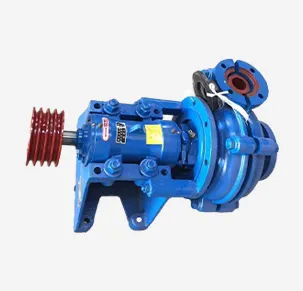English
- Afrikaans
- Albanian
- Amharic
- Arabic
- Armenian
- Azerbaijani
- Basque
- Belarusian
- Bengali
- Bosnian
- Bulgarian
- Catalan
- Cebuano
- Corsican
- Croatian
- Czech
- Danish
- Dutch
- English
- Esperanto
- Estonian
- Finnish
- French
- Frisian
- Galician
- Georgian
- German
- Greek
- Gujarati
- Haitian Creole
- hausa
- hawaiian
- Hebrew
- Hindi
- Miao
- Hungarian
- Icelandic
- igbo
- Indonesian
- irish
- Italian
- Japanese
- Javanese
- Kannada
- kazakh
- Khmer
- Rwandese
- Korean
- Kurdish
- Kyrgyz
- Lao
- Latin
- Latvian
- Lithuanian
- Luxembourgish
- Macedonian
- Malgashi
- Malay
- Malayalam
- Maltese
- Maori
- Marathi
- Mongolian
- Myanmar
- Nepali
- Norwegian
- Norwegian
- Occitan
- Pashto
- Persian
- Polish
- Portuguese
- Punjabi
- Romanian
- Russian
- Samoan
- Scottish Gaelic
- Serbian
- Sesotho
- Shona
- Sindhi
- Sinhala
- Slovak
- Slovenian
- Somali
- Spanish
- Sundanese
- Swahili
- Swedish
- Tagalog
- Tajik
- Tamil
- Tatar
- Telugu
- Thai
- Turkish
- Turkmen
- Ukrainian
- Urdu
- Uighur
- Uzbek
- Vietnamese
- Welsh
- Bantu
- Yiddish
- Yoruba
- Zulu
Telephone: +86 13120555503
Email: frank@cypump.com
Oct . 10, 2024 10:50 Back to list
water pipeline booster pump
Understanding Water Pipeline Booster Pumps An Essential Component of Modern Water Distribution Systems
In today’s world, efficient water distribution is critical for urban and rural communities alike. One of the key components that ensure the effective transportation of water across various terrains and distances is the water pipeline booster pump. These pumps play a vital role in maintaining water pressure and ensuring a consistent supply to consumers. This article delves into the mechanics, importance, and applications of booster pumps in water pipeline systems.
What is a Booster Pump?
A booster pump is a specific type of pump used to increase the pressure within a water system. It takes water from a storage tank, existing pipeline, or any other source and boosts its pressure to a level suitable for distribution. Booster pumps are typically employed in scenarios where water needs to be moved from lower to higher elevations or across long distances where pressure loss could occur.
How Booster Pumps Work
Booster pumps operate based on fundamental principles of fluid dynamics. When water flows through a pipeline, it may encounter resistance from friction, elevation changes, or other factors that contribute to pressure loss. A booster pump addresses these challenges by utilizing mechanical energy to enhance the water's pressure.
The operation typically involves a motor-driven impeller, which increases the speed of the water entering the pump. The high-speed water then moves through a volute or diffuser, converting the kinetic energy into pressure energy. The result is water that can effectively travel further and reach end-users at the required pressure.
Importance of Booster Pumps
1. Enhanced Performance In many municipal water supply systems, booster pumps ensure that water can reach higher stories of buildings or remote areas that are further away from the main supply. This capability is essential for the effective functioning of firefighting systems, irrigation, and industrial processes.
2. Pressure Maintenance Maintaining consistent water pressure is vital not just for end-users' convenience but also for protecting the integrity of the pipeline system. Fluctuating pressures can lead to leaks or even burst pipes, resulting in costly repairs and water loss. Booster pumps help in stabilizing pressure levels throughout the network.
water pipeline booster pump

3. Energy Efficiency Modern booster pumps are designed for energy efficiency, utilizing variable frequency drives (VFDs) that adjust the pump's speed according to demand. This not only reduces energy consumption but also extends the lifespan of the equipment by minimizing wear and tear from continuous high-speed operation.
Applications of Booster Pumps
Booster pumps are widely used in various applications including
- Residential Buildings In high-rise buildings, booster pumps are often installed to ensure that water reaches upper floors where gravity alone cannot suffice.
- Industrial Use Factories and plants may require booster pumps to provide sufficient water pressure for production processes that rely on consistent water supply.
- Irrigation Systems In agriculture, booster pumps are utilized to maintain adequate pressure in irrigation systems, ensuring that water is distributed evenly and efficiently across fields.
- Fire Protection Systems In fire safety protocols, booster pumps are critical for ensuring that adequate water pressure is available for fire hydrants and sprinkler systems, especially in high-risk areas or large buildings.
Conclusion
In conclusion, water pipeline booster pumps are an indispensable component of modern water distribution systems. They not only enhance the performance and efficiency of water supply networks but also ensure the safety and reliability of water access for communities. As urbanization and industrial activities continue to place demands on water resources, the role of booster pumps will only become more significant in facilitating effective water management solutions. From residential buildings to large-scale industrial applications, understanding and implementing booster pump technology is key to achieving a sustainable and efficient water supply system.
-
ISG Series Vertical Pipeline Pump - Chi Yuan Pumps Co., LTD.|Advanced Hydraulic Design&Energy-Efficient Solutions
NewsJul.30,2025
-
ISG Series Vertical Pipeline Pump - Chi Yuan Pumps Co., LTD.
NewsJul.30,2025
-
ISG Series Vertical Pipeline Pump - Chi Yuan Pumps Co., LTD.|energy-efficient fluid handling&industrial durability
NewsJul.30,2025
-
ISG Series Vertical Pipeline Pump - Chi Yuan Pumps | Advanced Engineering&Industrial Efficiency
NewsJul.30,2025
-
ISG Series Pipeline Pump - Chi Yuan Pumps | High Efficiency, Energy Saving
NewsJul.30,2025
-
ISG Series Vertical Pipeline Pump-Chi Yuan Pumps|High Efficiency&Reliable Performance
NewsJul.29,2025










